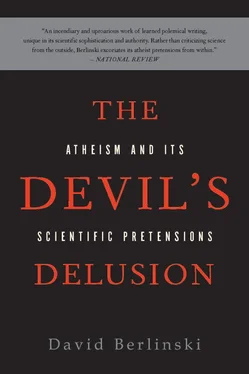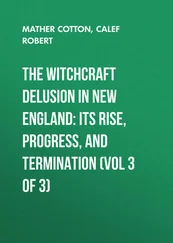Schrödinger’s cat is a part of the mythology of quantum theory, and according to the Copenhagen interpretation, it is there for the count, because no one can imagine how to get rid of the poor creature.
For this reason any number of physicists have endeavored to get rid of the Copenhagen interpretation instead. In 1957, Hugh Everett III, a young physicist at Princeton, argued in his Ph.D. dissertation that the collapse of the wave function could be explained on the assumption that reality somehow contains far more worlds than previously imagined. Where an observer in classical quantum theory would occupy himself in collapsing what we may fondly recall as the good, old-fashioned wave function, according to the many-worlds interpretation, at precisely the moment a measurement is made, the universe branches into two or more universes. The cat who was half dead and half alive gives rise to two separate universes, one containing a cat who is dead, the other containing a cat who is alive. The new universes cluttering up creation embody the quantum states that were previously in a state of quantum superposition.
The many-worlds interpretation of quantum mechanics is rather like the incarnation. It appeals to those who believe in it, and it rewards belief in proportion to which belief is sincere.
The wave function of the universe is designed to represent the behavior of the universe— all of it. It floats in the void—these metaphors are inescapable—and passes judgment on universes. Some are probable, others likely, and still others a very bad bet. Nonetheless, the wave function of the universe cannot be seen, measured, assessed, or tested. It is purely a theoretical artifact. Physicists have found it remarkably easy to pass from speculation about the wave function of the universe to the conviction that there is a wave function of the universe. This is nothing more than an endearing human weakness. Less endearing by far is their sullen contempt toward religious argument when it is engaged in precisely the same attempt to reach by speculation what cannot be grasped in any other way.
By itself, the wave function of the universe can do little to advance the double agenda of quantum cosmology: to get rid of the initial singularity of Big Bang cosmology, and to show how the universe emerged from nothing much or nothing at all. It is a necessary piece of equipment, like the mountain climber’s rope.
What the physicist requires to get climbing is a readjustment of our traditional physical notions of time, a way of giving it a new look. The new look is necessary because, as Stephen Hawking and Roger Penrose demonstrated in the mid-1960s, the Big Bang singularity is simply unavoidable. Within general relativity, time has an unvarying direction. If a man is going down toward the Big Bang, it is one thing before another, and if he is coming up from the Big Bang, one thing after another. This is a feature of the real number system itself. It cannot be changed. Within quantum cosmology, however, time has been altered. Very much like a physician who proposes to cure his patient’s infection by infecting him with another affliction, Hawking suggested that in going down toward the Big Bang, one mathematical regime (that of the real numbers) would somehow give way to another (that of the imaginary numbers).
It was the use of the word imaginary in this context that gave his ideas their air of pontifical mystification. How can numbers be imaginary? They cannot be. Hawking was simply appealing to the complex numbers, and these are perfectly well-defined mathematical objects. They correspond more or less to pairs of points in the plane.
The complex numbers have one outstanding advantage: They are not ordered. They do not go anywhere. If time is measured by the complex numbers, there is no before at work and no worries at all about winding up at the Big Bang singularity. Thus in Hawking’s scheme, at the point in which the regime of the real numbers gives way, the complex regime takes over. As the physicist descends toward the place formerly known as the Big Bang singularity, time smoothly executes a transformation all its own, the region around the tip becoming gently curved, so that the cone ends in a pendulous sac where before it ended at a point. There is now a moment corresponding to the magician’s withdrawal of a handkerchief from his sleeve: The Big Bang singularity has disappeared!
It is just gone.
Within the sac, the physicist cannot see or otherwise determine a before before his last before. He is adrift in a directionless borough of space and time.
It is very much like Brooklyn, one reason that the early universe (and everyone else) was so eager to get out of there.
CAN THEY GET AWAY WITH IT?
In commenting on the scenario described by Hawking and his colleagues, Roger Penrose, writing in The Road to Reality, offered his opinion that their theories were remarkably elegant. It was a gracious remark. A far more natural reaction would be to ask, “Can they really get away with that?” From a technical point of view the answer is yes. They have the mathematical means. In going down, one version of space and time gives way. Another becomes ascendant. A fog of sorts begins to cover everything. It disappears on coming up. In between the going down and the coming up, the original Big Bang singularity has vanished.
When scholars persuaded of the essential inerrancy of the Bible attempt to reconcile the Book of Genesis with contemporary estimates of the age of the cosmos, they do so by changing the time mentioned in the Bible and so altering its nature. These efforts are not necessarily foolish. Often there is real ingenuity required, and no little physical competence. The physicist Gerard Schroeder is convinced that the Hebrew Bible provides a stunning insight into the cosmos of creation, and he has traveled the world in an effort to present his views. They have not been well received by physicists, who in their retirement often enjoy writing critical assessments of biblical scholarship, a vocation that allows them to demonstrate their knowledge without ever defending it. The gravamen of their concerns lies less with the plausibility of various schemes than with their motivation. And that is frankly and honestly in the service of a religious agenda.
And Hawking?
The question is leading, Your Honor, I know that, but look where it is leading.
Never mind looking, if you are otherwise occupied. I’ll point out the place myself. It is leading to a place that anyone who follows human thought should find familiar. Arguments follow from assumptions, and assumptions follow from beliefs, and very rarely—perhaps never—do beliefs reflect an agenda determined entirely by the facts. No less than the doctrines of religious belief, the doctrines of quantum cosmology are what they seem: biased, partial, inconclusive, and largely in the service of passionate but unexamined conviction.
There is no surprise in any of this, and if there is, there should not be.
With the Big Bang singularity removed from sight, there remains the second part of quantum cosmology’s two-part agenda, and that is to provide a scenario for the emergence of the universe—our own universe, that is, now demoted in grandeur from the universe to one among many.
The argument that Hawking has offered may be conveyed by question-and-answer, as in the Catholic catechism.
A Catechism of Quantum Cosmology
Q: From what did our universe evolve?
Читать дальше














